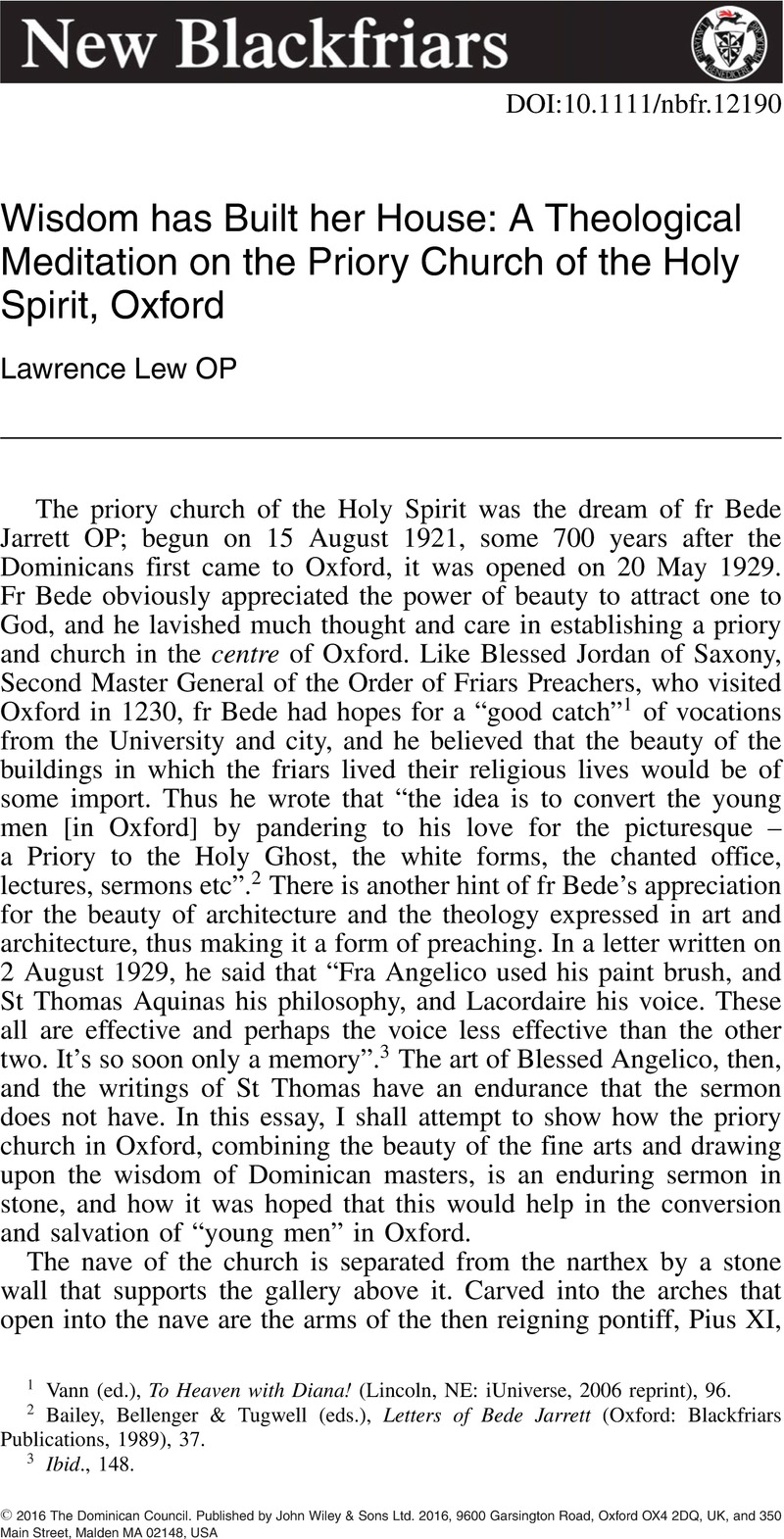No CrossRef data available.
Article contents
Wisdom has Built her House: A Theological Meditation on the Priory Church of the Holy Spirit, Oxford
Published online by Cambridge University Press: 01 January 2024
Abstract
An abstract is not available for this content so a preview has been provided. Please use the Get access link above for information on how to access this content.

- Type
- Original Article
- Information
- Copyright
- Copyright © 2016 The Dominican Council. Published by John Wiley & Sons Ltd
References
Albertus, Magnus, On Animals, volume II, (Baltimore, MD: John Hopkins University Press, 1999).Google Scholar
Aquinas, Commentary on the Gospel of John: part II, (Petersham, MA: St Bede's Publications, 1980).Google Scholar
Aquinas., Commentary on the Sentences, from <http://www.op-stjoseph.org/Students/study/thomas/Sentences.htm>..>Google Scholar
Aquinas., Summa Contra Gentiles, from <http://www.op-stjoseph.org/Students/study/thomas/ContraGentiles.htm>..>Google Scholar
Bailey, Bellenger & Tugwell, (eds.), Letters of Bede Jarrett (Oxford: Blackfriars Publications, 1989).Google Scholar
Krasić, , The Dominican Priory in Dubrovnik (Dubrovnik: Dominikansi Samotsan Sv. Dominika, 2002).Google Scholar
Saward, , The Beauty of Holiness and the Holiness of Beauty (San Francisco: Ignatius Press, 1997).Google Scholar
Torrell, , St Thomas Aquinas – volume 2: Spiritual Master (Washington DC, Catholic University of America Press, 2003).Google Scholar


